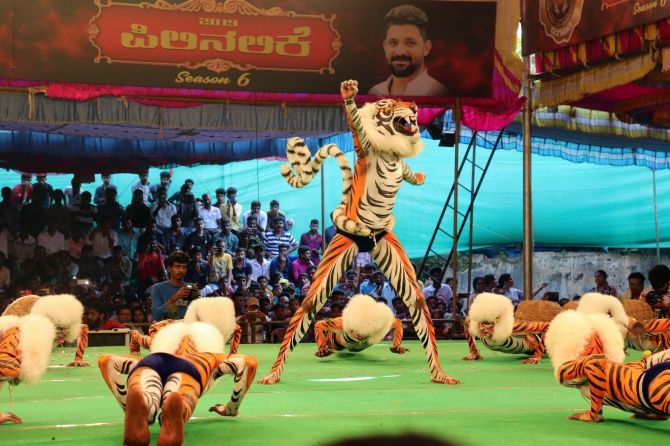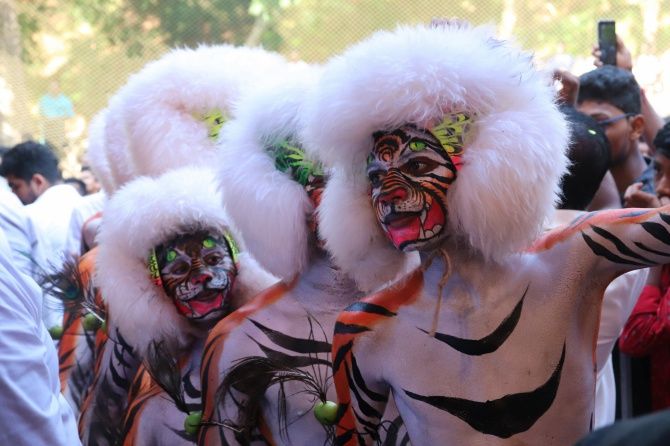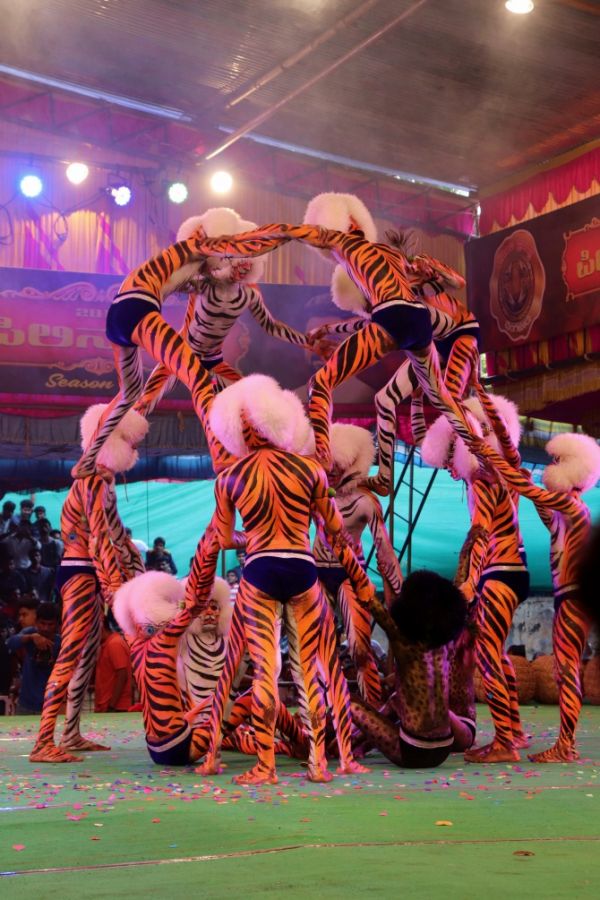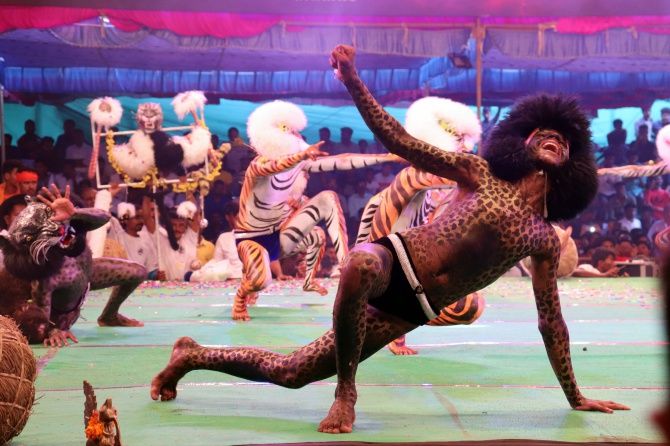 | « Back to article | Print this article |
Every year, during Navratri, the key attraction in Mangaluru is the tiger dance, popularly known as Pili Vesha or Huli Vesha.
This traditional dance form is an ode to Goddess Durga and her ride, the tiger.
Rediff.com's Laxmi Negi brings you glimpses from this year's event.
Photographs: Varun S; Videos: Laxmi Negi/Rediff.com

Dassehra in Mangaluru is considered incomplete without the tradition 'pili vesha' or tiger dance, an integral part of Tulu culture.
It involves men painting their bodies in yellow and black stripes, which takes about six to eight hours as various layers are to be painted on.
Once done, backed by drummers, they roam around the streets going from house to house.
Given the popularity of the dance form, competition among tiger dance teams is also inevitable.
Apart from men, the troupes also consist of some children.
The dancers don a tiger mask or a cap with furry patch on the ears.
The black tiger is considered the most ferocious of them all.

The dancers perform breathtaking somersault flips.
At some places the artists form a human pyramid, enthralling the spectators.
Pili Nalike, the inter-district tiger dance competition, has been organised by local Congress politician Mithun Rai for the last five years during Dassehra. The sixth instalment was held in the city on October 7.

Nine best troupes from all over the state clashed on stage to put up an excellent show.
Speaking to Rediff.com, Shiva Sharan, MD of Namma TV, which telecasts the Pili Nalike (dance) competition in Mannaguda, Mangaluru, said, "Pili Vesha has a history of 200-300 years. There are traditionally only 10 steps in the synchronised dance form and the original music is of the drum beats (taase)."

"The original colours are orange, white and yellow but these days, the tigers also put green paint on their chest."
"This is our sixth season of Pili Nalike and we have been growing. We focus on the traditions and do not allow any modern forms."
"In the first year there were 4000-5000 spectators and the number has since been increasing. This year we have made arrangements for 10,000 spectators."
He points out that they have made room for change in only one department, in the highlight of the dance form Kuri Hakunu.
"It is that point when the tiger kills a sheep and then lifts it with his mouth and flings it in the air. This practice has been stopped citing cruelty on animals.
"It has been replaced with a paddy stack, weighing 35 kg," he said.